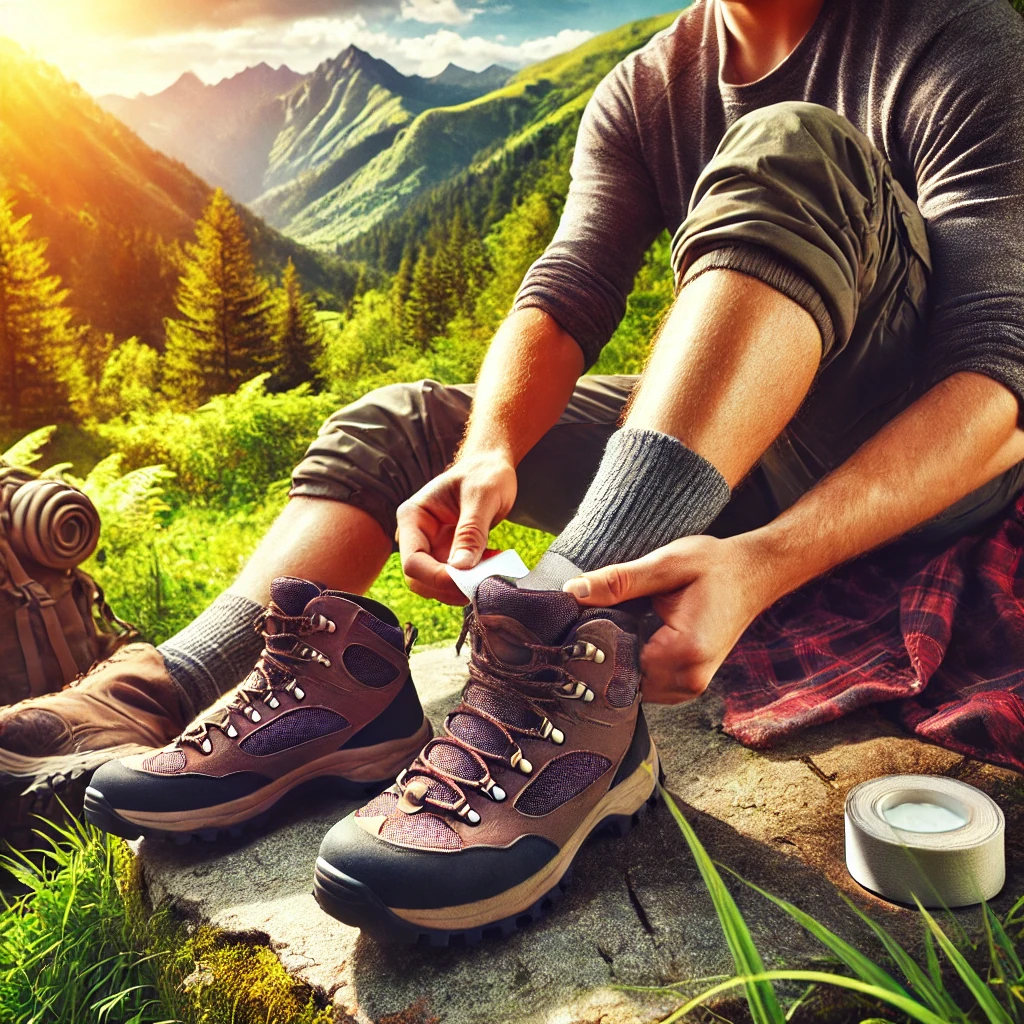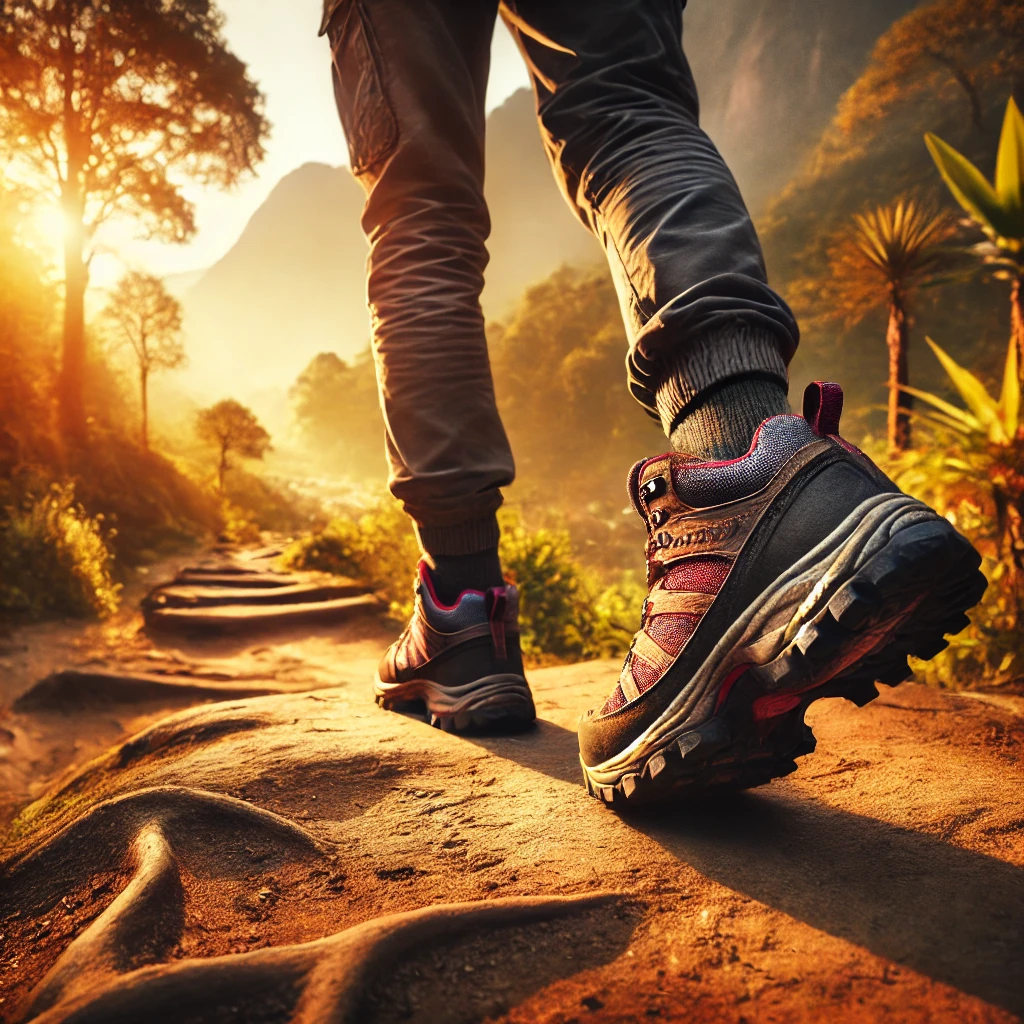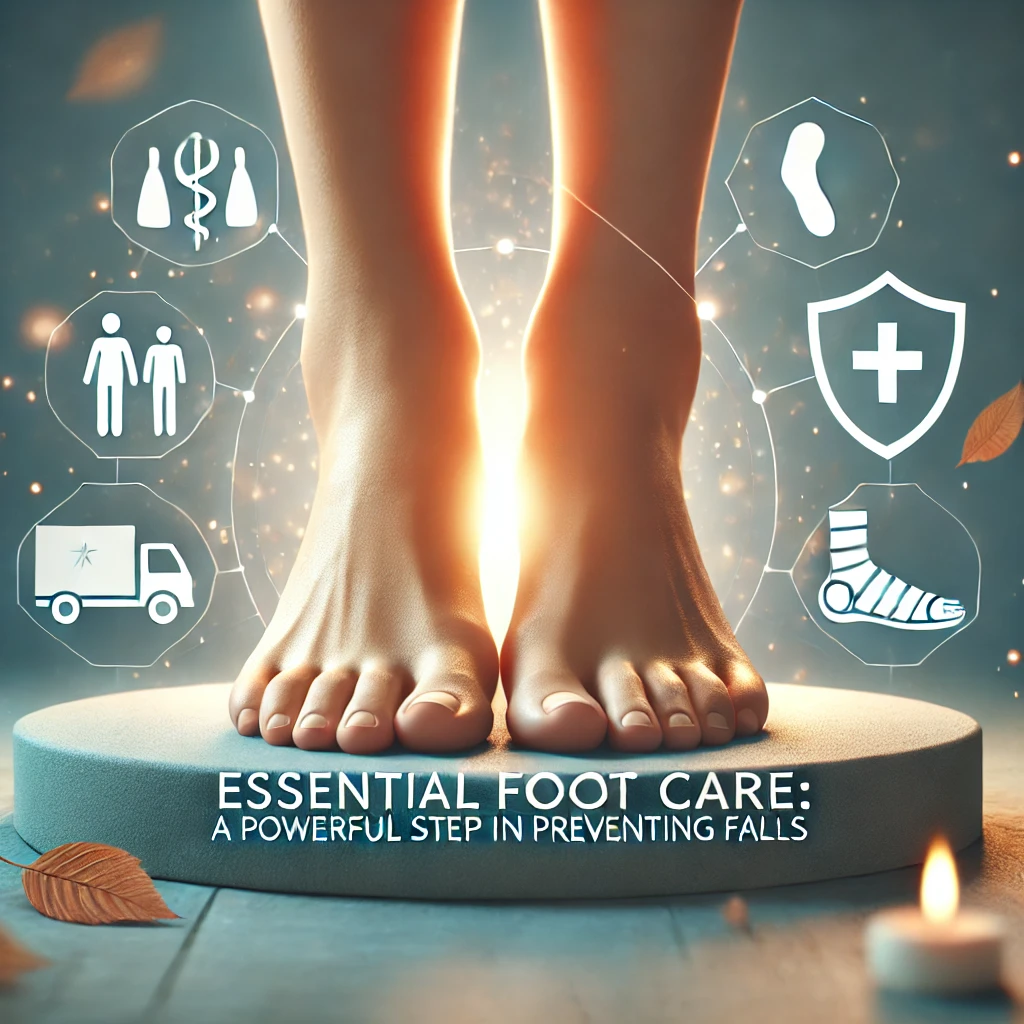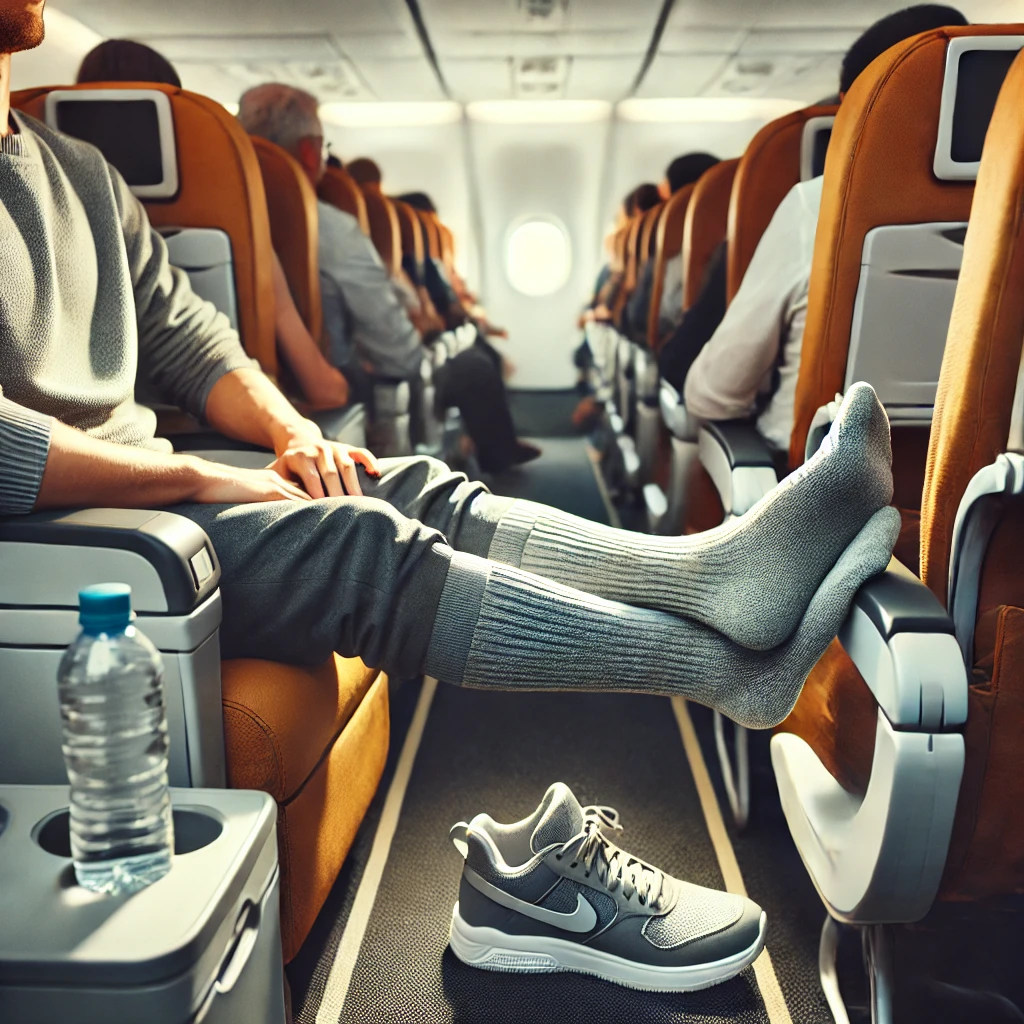Introduction
Outdoor adventures can be exhilarating, but they can also take a toll on your feet. Whether you’re hiking, running, or trekking, your feet are the foundation of your journey. Ignoring foot care can lead to blisters, soreness, and even serious injuries that could cut your trip short. To ensure a comfortable and enjoyable experience outdoors, you need to give your feet the attention they deserve. In this guide, we’ll dive deep into essential foot care tips for outdoor enthusiasts, helping you stay active and pain-free.
Importance of Foot Care for Outdoor Activities
Taking care of your feet isn’t just about comfort—it’s about safety. Poor foot health can lead to instability, pain, and infections, making your outdoor experience miserable. When you’re miles away from civilization, the last thing you want is a foot injury. Proper foot care helps prevent issues before they arise, ensuring that your adventures are smooth and enjoyable.
Choosing the Right Footwear

The Role of Proper Shoes in Foot Health
Wearing the right shoes is the first and most crucial step in foot care. Poorly fitting or low-quality footwear can cause blisters, foot pain, and long-term issues like plantar fasciitis. A good pair of hiking or running shoes should provide:
- Adequate arch support
- Proper cushioning for impact absorption
- A snug but comfortable fit
- Durability for rough terrains
Best Hiking Boots and Shoes for Different Terrains
Not all trails are the same, and neither are the shoes meant for them. Choosing the right pair depends on the type of adventure:
- Day hikes on even terrain: Lightweight hiking shoes or trail runners
- Rocky or uneven trails: Mid-to-high-cut hiking boots for ankle support
- Wet or muddy trails: Waterproof boots with deep treads
- Backpacking and long treks: Heavy-duty hiking boots with strong support
How to Choose the Right Size and Fit
Ill-fitting shoes can lead to blisters, black toenails, and serious discomfort. To ensure the best fit:
- Try shoes on in the evening when your feet are slightly swollen
- Wear the socks you intend to use while hiking
- Leave about a thumb’s width of space in the toe box
- Walk around the store and test for pressure points
Socks Matter More Than You Think
Importance of Moisture-Wicking Socks
Cotton socks might be fine for everyday wear, but they’re terrible for outdoor adventures. They retain moisture, increasing the risk of blisters and fungal infections. Instead, opt for moisture-wicking materials like merino wool, synthetic blends, or bamboo.
Best Sock Materials for Outdoor Adventures
- Merino wool: Naturally moisture-wicking and odor-resistant
- Synthetic blends (polyester, nylon, spandex): Quick-drying and durable
- Bamboo: Soft, breathable, and antibacterial
How to Layer Socks for Extra Protection
Layering socks can help prevent blisters and keep feet warm in cold weather. A two-layer system works well:
- Thin liner sock: Made from moisture-wicking material to reduce friction
- Thicker outer sock: Adds cushioning and insulation
This method is especially useful for long hikes or cold-weather trekking.
Preventing Blisters and Hotspots

Understanding Blisters and How They Form
Blisters occur due to friction between your skin and socks or shoes. Moisture and heat make the skin more vulnerable to friction, leading to fluid buildup.
Techniques to Prevent Blisters Before They Start
- Wear properly fitted shoes and moisture-wicking socks
- Apply lubricants like Vaseline or anti-blister balm to friction-prone areas
- Use tape or moleskin on known hotspot areas
- Keep feet dry and change socks if they become sweaty
How to Treat a Blister While Outdoors
If a blister forms, it’s crucial to address it immediately:
- Clean the area with antiseptic
- If it’s small and intact, leave it alone or cover it with a blister pad
- If it’s large and painful, sterilize a needle, drain it carefully, and apply antibiotic ointment before covering it
Keeping Feet Dry and Comfortable
Importance of Dry Feet in Outdoor Settings
Wet feet increase the risk of blisters, fungal infections, and even trench foot (a painful condition caused by prolonged exposure to dampness).
Tips to Manage Sweat and Moisture
- Use foot powders or antiperspirant sprays
- Change socks frequently
- Opt for breathable, quick-dry shoes
How to Dry Wet Shoes and Socks Efficiently
- Remove insoles and let them air dry
- Stuff shoes with newspaper to absorb moisture
- Use campfires cautiously to dry footwear without damaging them
Foot Hygiene in the Outdoors
Keeping Feet Clean on Long Hikes and Camping Trips
Maintaining foot hygiene outdoors can be challenging, but it’s crucial for preventing infections and discomfort. Here’s how to keep your feet clean while hiking or camping:
- Wash your feet daily using biodegradable soap and water. If water is scarce, use baby wipes to remove dirt and sweat.
- Change socks regularly to prevent moisture buildup and reduce bacterial growth.
- Air out your feet during breaks to let them dry and breathe.
- Avoid walking barefoot, especially in areas with sharp rocks, thorns, or contaminated water.
Managing Toenail Care and Calluses
- Trim toenails before long hikes to avoid painful ingrown nails. Cut them straight across and smooth the edges with a nail file.
- Moisturize calluses regularly to prevent cracking, but don’t remove them entirely—calluses act as a natural barrier against friction.
- Use a pumice stone to gently reduce thick calluses if they become uncomfortable.
Foot Soaking and Massaging for Recovery
After a long day outdoors, soaking and massaging your feet can help relieve soreness and improve circulation.
- Soak your feet in cold water for 10-15 minutes to reduce swelling.
- Massage your feet using your hands or a small ball to alleviate tension.
- Apply moisturizer to keep skin soft and prevent cracks.
Dealing with Foot Pain and Fatigue
Recognizing Foot Strain and Common Pains
Pain in your feet can signal different issues, including:
- Heel pain (Plantar Fasciitis): Inflammation of the tissue at the bottom of your foot, often caused by overuse.
- Arch pain: Usually due to poor footwear or fallen arches.
- Metatarsalgia: Pain in the ball of your foot from prolonged pressure.
Stretches and Exercises for Stronger Feet
Strengthening your feet can prevent fatigue and injuries. Try these exercises:
- Toe stretches: Pull back your toes gently to stretch the arch.
- Heel raises: Stand on your toes and slowly lower down to strengthen your calves.
- Foot rolling: Roll a ball or water bottle under your foot to massage tight muscles.
How to Alleviate Foot Pain During and After a Hike
- Take breaks to reduce strain on your feet.
- Elevate your feet when resting to decrease swelling.
- Apply ice or cold compresses if your feet feel inflamed.
- Use pain relief creams like arnica or menthol-based balms.
First Aid for Foot Injuries
Common Foot Injuries in Outdoor Adventures
Foot injuries are common when spending long hours on trails. Some of the most frequent ones include:
- Blisters from friction
- Sprained ankles from uneven terrain
- Cuts and scrapes from sharp rocks or debris
- Toenail damage from repeated impact inside shoes
DIY First Aid Tips for Cuts, Scrapes, and Sprains
- Blisters: Cover them with moleskin or a blister pad to prevent further irritation.
- Sprains: Apply the R.I.C.E. method (Rest, Ice, Compression, Elevation).
- Cuts and scrapes: Clean the wound with antiseptic wipes and cover with a bandage.
When to Seek Medical Help
If a foot injury is severe—such as a deep cut, persistent swelling, or extreme pain—seek professional medical attention as soon as possible.
Choosing the Right Insoles and Orthotics

Benefits of Insoles for Long Walks and Hikes
Insoles provide extra cushioning and arch support, helping to reduce foot fatigue and prevent common issues like plantar fasciitis.
Custom vs. Over-the-Counter Insoles
- Custom orthotics: Tailored to your feet for maximum support but expensive.
- Over-the-counter insoles: More affordable and effective for general support.
How to Maintain and Replace Insoles
- Remove and air them out after each use to prevent odor buildup.
- Replace insoles every 6-12 months, depending on usage.
Seasonal Foot Care Tips
Summer Foot Care: Dealing with Heat and Sweating
- Wear breathable shoes to prevent overheating.
- Apply foot powder to absorb sweat and prevent blisters.
- Stay hydrated to reduce swelling in hot weather.
Winter Foot Care: Protecting Against Cold and Frostbite
- Choose insulated, waterproof boots to keep feet warm.
- Wear thermal socks but avoid overly tight footwear that restricts circulation.
- If your feet get wet, change socks immediately to prevent frostbite.
Spring and Fall Considerations for Changing Terrain
- Be prepared for muddy and slippery trails by wearing shoes with good grip.
- Keep an extra pair of dry socks handy.
Nutrition for Healthy Feet
How Diet Affects Foot Health
What you eat directly impacts your feet. Poor nutrition can lead to weaker bones, muscle cramps, and inflammation.
Essential Vitamins and Minerals for Strong Feet
- Calcium & Vitamin D: Strengthen bones and prevent fractures.
- Magnesium: Reduces muscle cramps and fatigue.
- Omega-3s: Help with inflammation and joint health.
Hydration and Its Role in Foot Care
Dehydration can cause foot cramps and swelling, so drink plenty of water during hikes.
Preventing and Managing Fungal Infections
Common Fungal Issues in Outdoor Enthusiasts
- Athlete’s foot: Itchy, scaly rash between toes.
- Toenail fungus: Yellow, thickened nails.
Prevention Strategies for Athlete’s Foot and Toenail Fungus
- Keep feet dry and change socks regularly.
- Use antifungal powders or sprays.
- Avoid sharing socks or shoes.
Best Antifungal Treatments and Remedies
- Over-the-counter antifungal creams
- Tea tree oil (natural antifungal)
- Proper foot hygiene
Tips for Long-Distance Hiking and Backpacking
Preparing Feet for Multi-Day Hikes
- Break in your shoes before the trip.
- Strengthen feet with exercises weeks in advance.
- Keep foot care essentials (bandages, blister pads, powders) in your pack.
Managing Foot Fatigue on the Trail
- Stretch feet during breaks.
- Adjust laces to reduce pressure points.
- Change socks mid-hike if they get damp.
Recovery Strategies After Long Hikes
- Soak feet in cold water to reduce swelling.
- Apply a moisturizing balm to prevent cracked skin.
- Elevate feet to promote circulation.
Special Considerations for Trail Runners
Footwear and Socks for Trail Running
- Choose lightweight trail-running shoes with grip.
- Wear moisture-wicking socks to prevent blisters.
How to Avoid Foot Injuries While Running Outdoors
- Strengthen foot muscles with balance exercises.
- Warm up properly before runs.
- Avoid overtraining to prevent stress fractures.
Post-Run Recovery and Foot Care
- Massage feet to relieve tension.
- Stretch calves and arches to prevent tightness.
- Check for blisters or bruises after each run.
Conclusion
Taking care of your feet is essential for any outdoor enthusiast. By choosing the right footwear, maintaining hygiene, preventing blisters, and practicing proper recovery, you can enjoy outdoor adventures without discomfort. Prioritize foot care, and your adventures will be pain-free and enjoyable!
Frequently Asked Questions
1. What is the best way to prevent blisters while hiking?
Wear moisture-wicking socks, choose well-fitted shoes, and use blister-prevention products like moleskin.
2. How often should I replace hiking boots?
Replace them every 500-1,000 miles, depending on wear and tear.
3. Can I hike with a foot injury?
Minor injuries can be managed, but serious pain requires rest and recovery.
4. What is the best foot soak after hiking?
Cold water or Epsom salt soaks help reduce inflammation and relax muscles.
5. How can I strengthen my feet for outdoor activities?
Do toe stretches, calf raises, and foot rolling exercises regularly.










